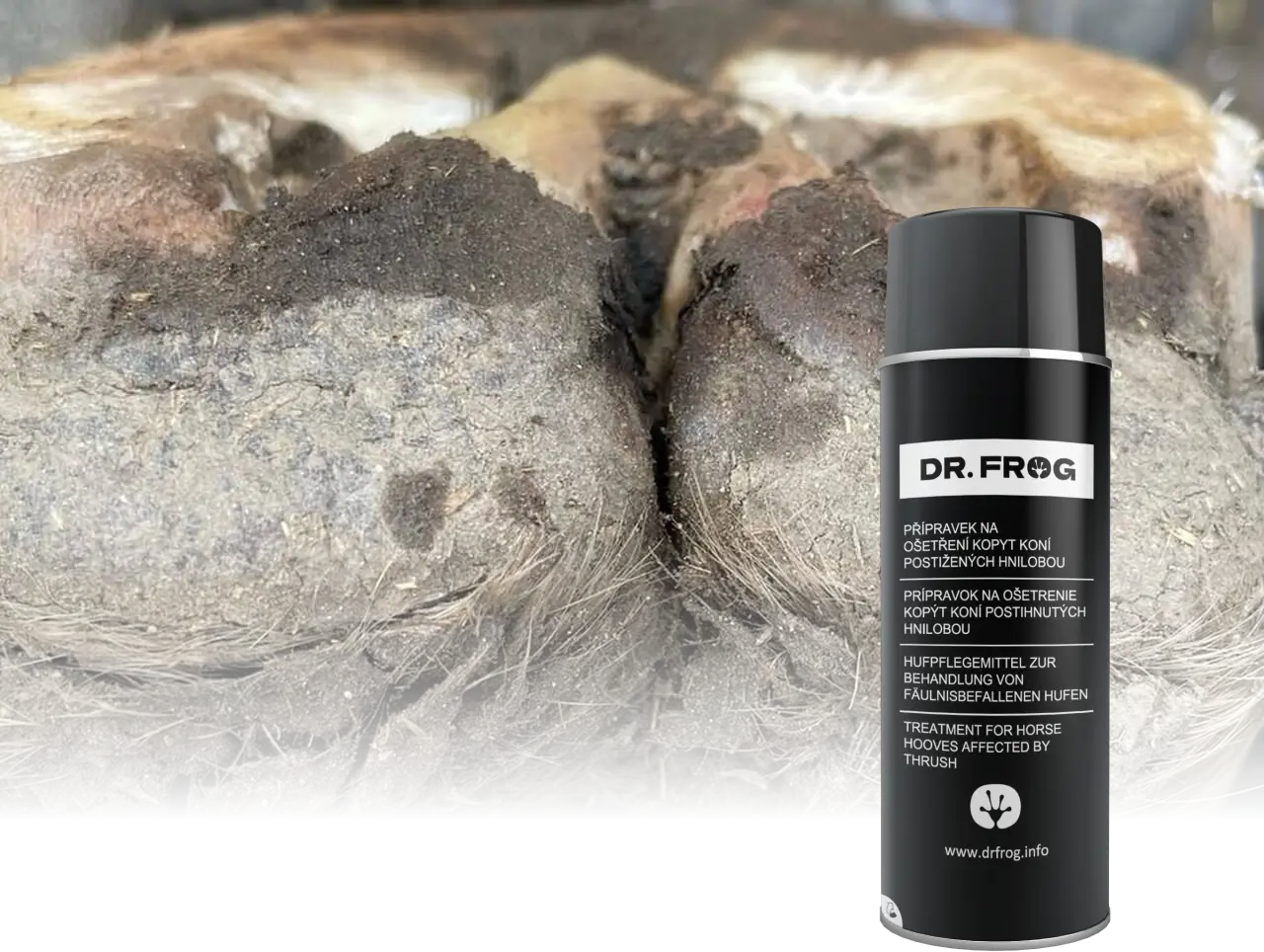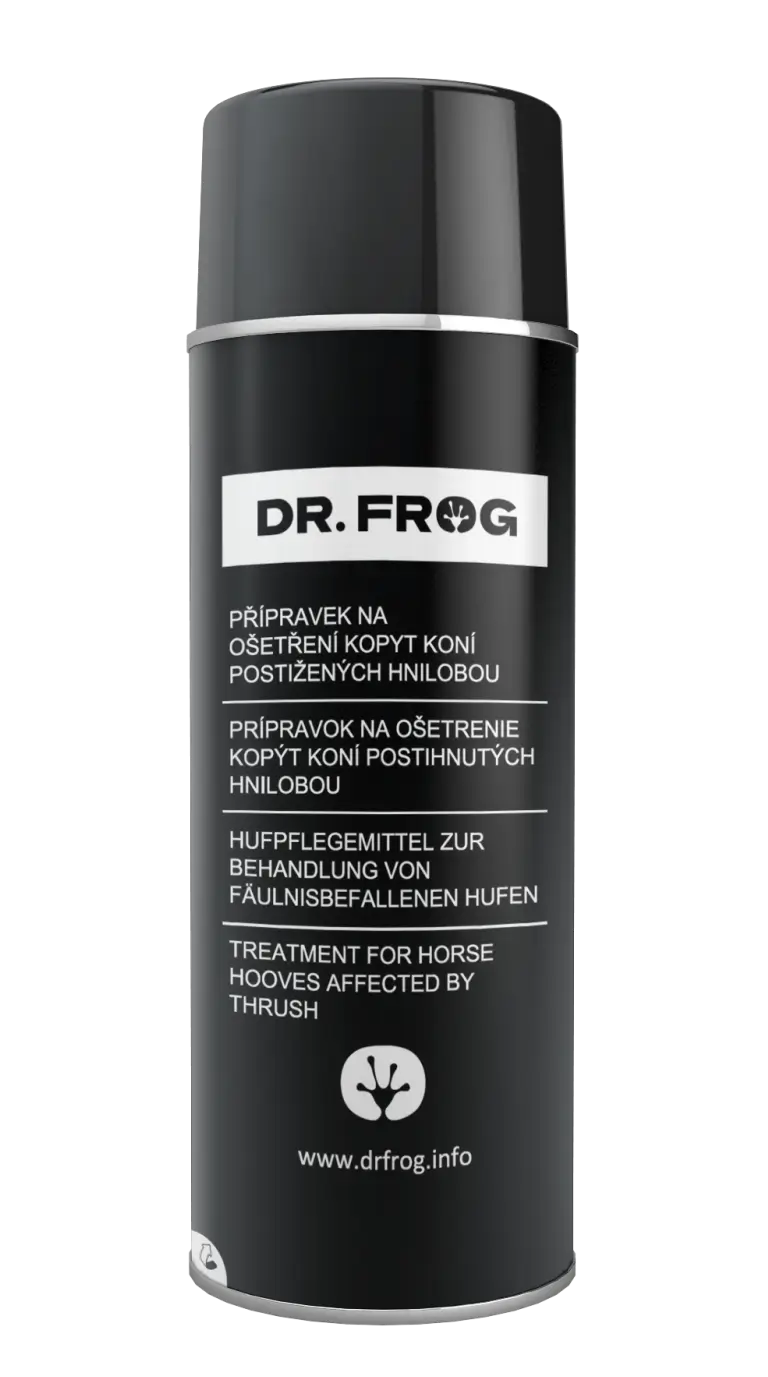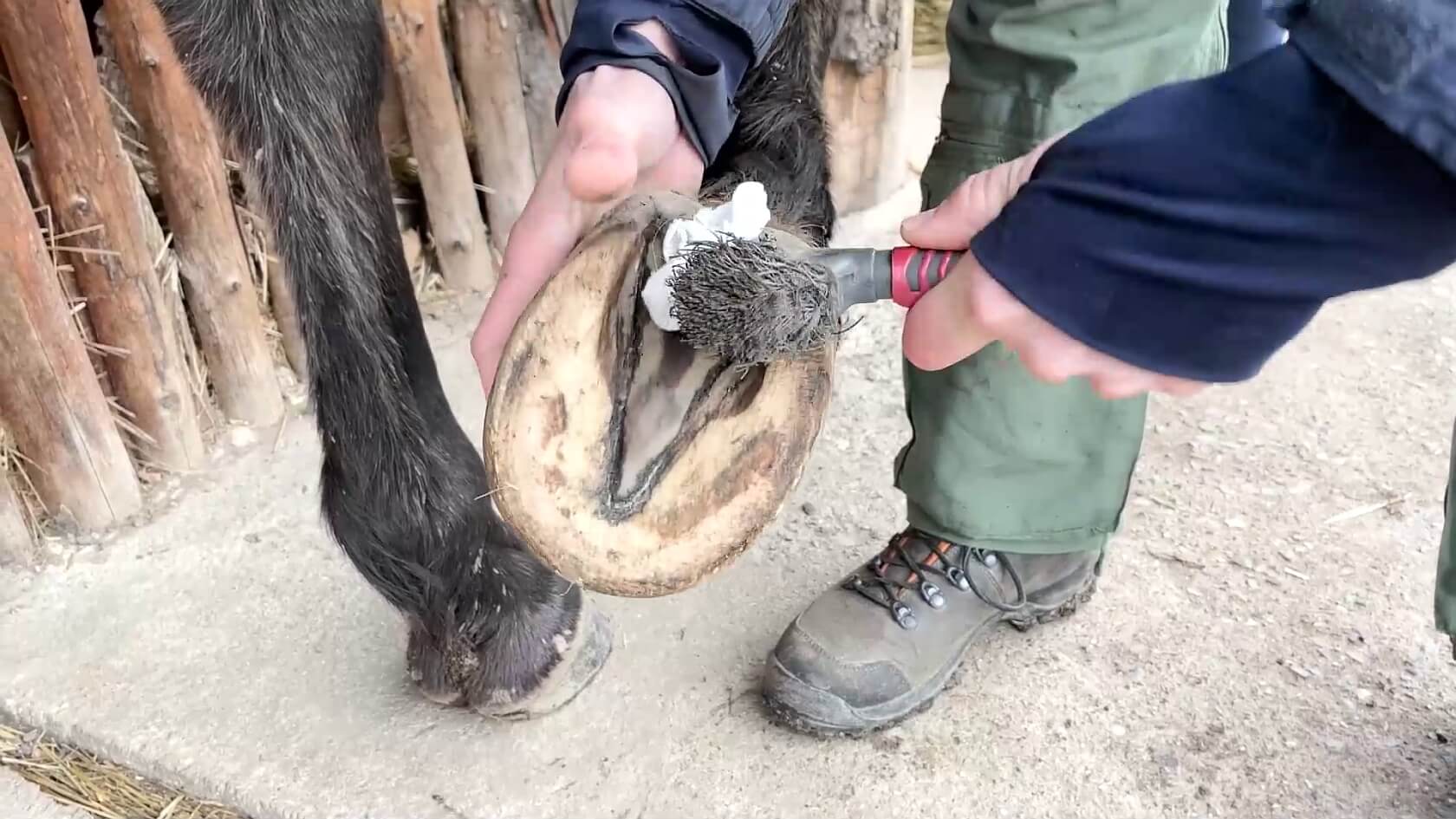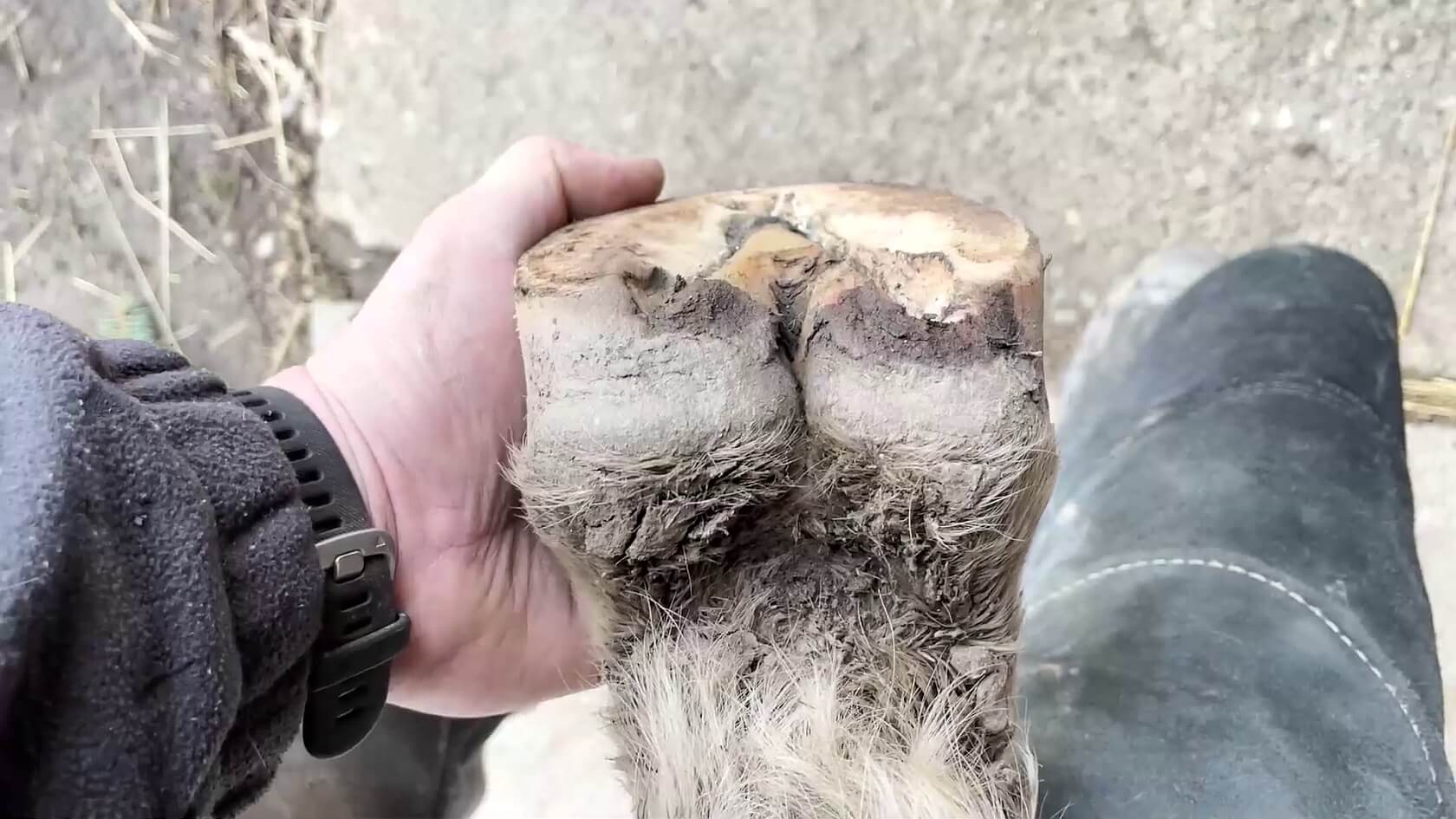Horse hooves thrush
Thrush is the most common disease affecting the horse’s hoof. It is an anaerobic bacterial disease, ie. caused by bacteria thriving and living in the absence of air.

Thrush is the most common disease affecting the horse’s hoof. It is an anaerobic bacterial disease, ie. caused by bacteria thriving and living in the absence of air.

It is very important to realize that the success in dealing with thrush is mainly in the hands of the owner or keeper and depends on their consistency and regularity in treating this sometimes fierce problem.
It is not uncommon for some neglected cases to be difficult to treat due to the horse’s high sensitivity and pain, which can cause the treatment not to be performed properly and the problem not inherently resolved.
Thrush is the most common disease affecting the horse’s hoof. It is an anaerobic bacterial disease, ie. caused by bacteria thriving and living in the absence of air.
It is characterized by:
The thrush most often begins in the central sulcus, and also here the horse’s greatest sensitivity in cleaning is manifested.
Central sulcus thrush above the area of soft bulbs of the heel. Sensitive reaction is manifested during cleaning.
In the initial phase, there is effective hygiene, ie thorough, proper and regular cleaning using appropriate veterinary products or cutting by a farrier.
In the intermediate stage, it is necessary to ask the farrier to remove the affected cornea and to continue according to point 1.
In the well-developed phase, the rot usually proliferates beyond the soft-footed area or to the depth of the fibrous bullet area, the hoof often has almost no bullet or is largely damaged by bacteria.
Depending on the various aspects and surfaces, movement can become a very painful affair for horses due to the penetration of dirt into a sensitive area not protected by an adequate layer of horn.
At such a stage, the horse’s management should be adjusted so that at the time of healing (restoration of a healthy horn to such a force before the stimulation of sensitive areas is suppressed) there is no unnecessary irritation and possible development of secondary inflammation. It is advisable to ask your farrier to remove the dead or contaminated horn and follow his recommendations.

The product is intended for the treatment of:
Thanks to its long-term development, optimized on the most suitable proportions of primary substances based on ethanol, dimethyl ether, beech tar and also in combination with a spray application form with a tube with the possibility of application in the upside-down position, it provides excellent penetration into the deepest structures, protection against penetration and multiplication of microorganisms and thus the development of thrush of the frog of the hoof. Approval number of the veterinary medicinal product in Czech republic is 295-21/C. Consult your veterinarian for any horse diseases.
Clean and dry the hoof properly. The central sulcus must be free of all impurities, especially the characteristic smelling gray-black “greasy” discharge of the bacterial decomposition of the horn, preferably by wiping with gauze using a hoof pick. In case of greater thrush, ask your farrier to remove the very affected horn.
The spray form allows easy and effective application directly to the affected area using the included tube (adjust the length as needed). Shake before use and spray the product directly on the affected areas on the underside of the hoof and adjacent parts weakened by thrush. The product can also be applied upside-down.
The usual application is carried out for 2-3 s on the affected area from the deepest structures (using a tube) towards the surface of the hoof, or according to the extent of the affected condition. At the beginning, repeat daily at first, and with a gradual increase in a healthy unaffected horn, you can reduce the interval every other day until the treatment is gradually discontinued.
Do not apply to the coronary band, the product is intended only for the treatment of the hoof horn.

Treatment of horse hoove thrush, 2:07

Treatment of horse hoove thrush, 2:17
It is very important to realize that the success in dealing with thrush is mainly in the hands of the owner or keeper and depends on their consistency and regularity in treating this sometimes fierce problem.
It is not uncommon for some neglected cases to be difficult to treat due to the horse’s high sensitivity and pain, which can cause the treatment not to be performed properly and the problem not inherently resolved.
Ing. Martin Surýnek, Ph.D.
+420 777 092 910
drfrog@prokopyto.cz
Červenohrádecká 1544, 431 11 Jirkov, Czech Republic, IN: 069 89 471
| Cookie | Duration | Description |
|---|---|---|
| _hjSession_2910835 | 30 minutes | No description |
| _hjSessionUser_2910835 | 1 year | No description |